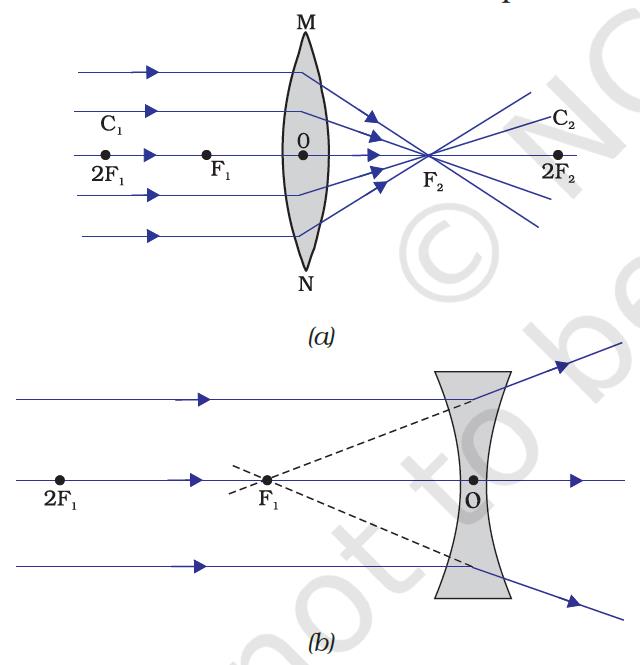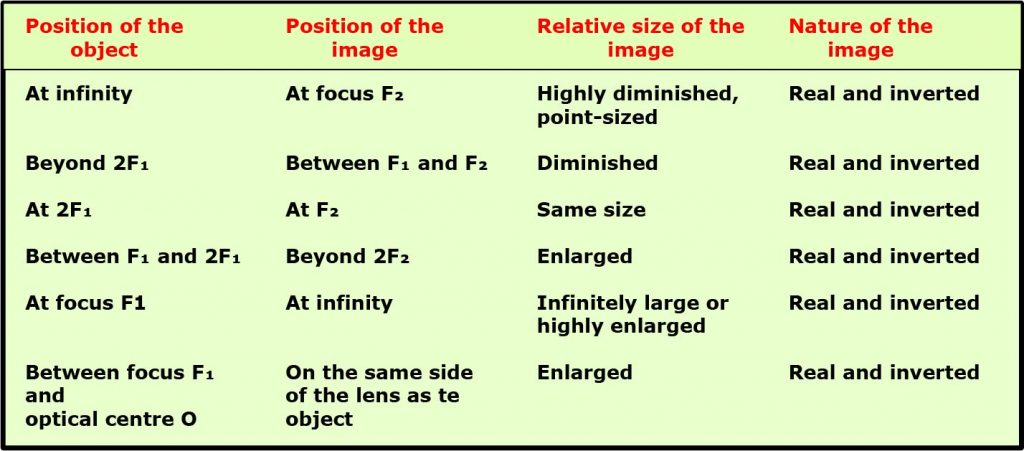- A lens is bound by at least one spherical surface. In such lenses, the other surface would be planes (plano-convex lens and plano-concave lens).
- Convex lens: It has two spherical surfaces that bulge outwards.
- It is thicker in the middle as compared to the edges
- It converges light rays, and it’s called converging lenses
- Concave lens: It has two spherical surfaces that curve inwards.
- It is thicker at the edges than at the middle
- It diverges light rays and hence is also called diverging lenses
Image Formation
The image will be realistic, reversed, and magnified. When an object is put inside F on a convex lens, the image will be virtual, upright, and magnified, and it will be on the same side of the lens as the object. All rays diverge when a lens is concave. Virtual pictures are created using concave lenses.

Image Formation through Lenses
As any observer views the picture of the item via the lens, images are produced at the spots where they are seeing. As a result, if the passage of numerous light beams via a lens is tracked, the light rays will intersect at a point as the lens refracts them.

Image formation by a Convex lens:
Table: Nature, position and relative size of the image formed by a convex lens

Lens Formula:
The formula for spherical lenses is given by:
1/v – 1/u = 1/f
This formula describes the relationship between object distance (u), image distance (v), and the focal length (f).
Power of a Lens:
It is the ability of a lens to converge or diverge light rays. It is the reciprocal of its focal length.
- The SI unit of power of a lens is dioptre
- The power of a convex lens is positive, and that of a concave lens is negative
 Profile
Profile Settings
Settings Refer your friends
Refer your friends Sign out
Sign out













